It’s less well-known than it should be that Taiwan’s Evergreen Symphony Orchestra [ESO] has a large number of DVDs available containing recordings of their concerts. I’ll review some of them over the next few months, and begin now with one featuring a concert given with, among others, the eminent Russian violinist Zakhar Bron in 2005. Also starring was the Japanese violinist Mayuko Kamio, only 19 at the time. The conductor for the occasion was Taiwan’s Wang Ya-hui (王雅慧) — she was then the orchestra’s music director.
The opening Vivaldi item is predictably light-weight, but the central piece, Bach’s Concerto for Two Violins, is fine indeed. Most surprising for me, though, was the Poeme for violin and orchestra by the reticent French 19th-century composer Ernest Chausson. Beautifully played here by Mayuko Kamio, it’s a hauntingly atmospheric piece. Chausson apparently wrote it after feeling a full-scale violin concerto would be too demanding for his small-scale talent — half way between romantic and impressionist. It was first performed three years before he died after crashing into a brick wall while out riding his bicycle.
These DVDs from ESO have real charm, giving the genuine feeling of a live performance. The full range can be seen on the orchestra’s Web site,
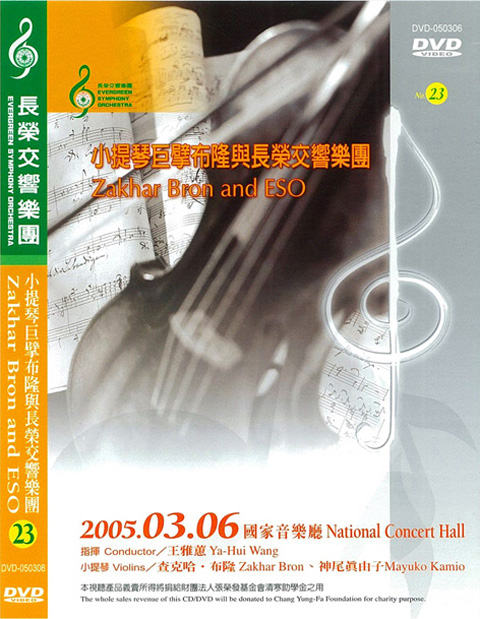
www.orchestra.evergreen.com.tw.
Video Artists International, of Pleasantville, New York, continues to offer rare recordings of famous stars across the whole range of classical music. Watching its black-and-white Tosca, starring Renata Tebaldi (one of the 20th century’s greatest operatic sopranos) in a performance in Tokyo in 1961, is a strange experience.
The production itself is 100 percent traditional. The 39-year-old Tebaldi is wildly applauded on her first appearance on stage, and the Cavaradossi, Gianni Poggi, acknowledges protracted cheering with grateful gestures to the audience just moments before he is due to be executed by firing squad in the stage plot.
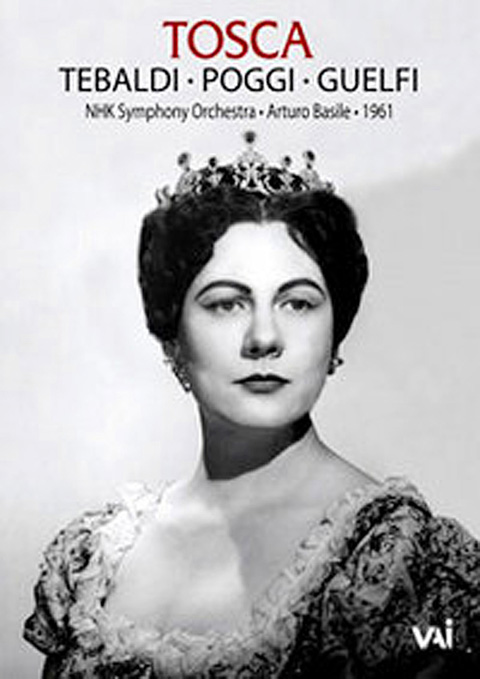
Tosca may be as melodramatic as any opera can be, but it has enormous strengths nonetheless. This performance is towered over by a superb Scarpia from baritone Giangiacomo Guelfi. He dominates the close of Act One, and the Te Deum against which he is supposed to snarl his evil designs scarcely makes a showing.
Act Two, at the end of which Tosca murders Scarpia , is superb throughout. This video shows Cavaradossi being tortured in the neighboring room, something that isn’t usually visible to a real-life audience. Meanwhile Scarpia is demanding his night of love with her as the price for his menials removing the spiked iron crown from her lover’s skull.
Puccini’s music isn’t ideally clear by modern recording standards, and the shepherd boy’s song that opens Act Three can hardly be heard at all. Even so, this is a version that collectors of operatic rarities will find hard to resist.
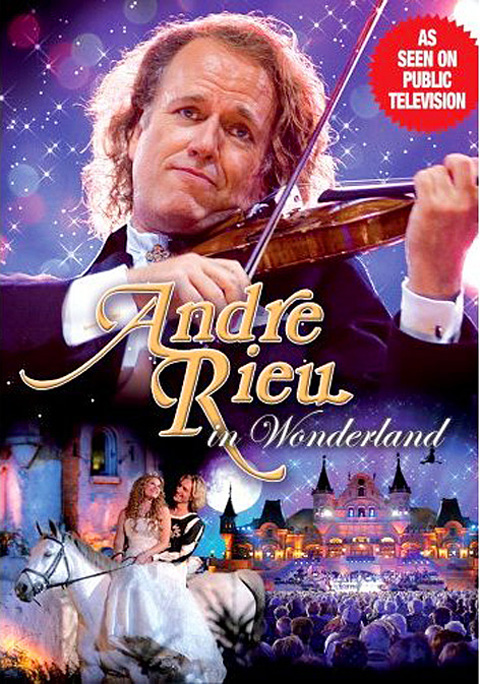
Haydn is known as the “father of the symphony,” but he was also the father of the string quartet. Prior to him, and in his earlier efforts in the form, the first violin played all the tunes and the other three players simply provided an accompaniment. But in the six quartets Opus 33 he made the crucial move of giving all four instruments equal, or almost equal, status, with the leading motifs switching around among them. This breakthrough led to the form becoming the premier vehicle for “intellectual” music for the next 150 years.
Moreover, it was these six quartets that inspired Mozart to labor over six of his own in the new style. They are some of the greatest quartets ever written, and he dedicated them to Haydn. The two men, plus Mozart’s father and another instrumentalist, played some of them together in Mozart’s Vienna apartment, and this was the event that prompted Haydn to tell Mozart’s father that his son was the greatest musical genius known to him, dead or alive.
There are many recordings of Haydn’s quartets, but the ones on period instruments by the French Quatuor Mosaiques (Mosaiques Quartet) are something special. Period instrument playing, which came into fashion in the 1970s, was initially beset with problems, but the Mosaiques are credited with having ironed these out and produced versions that are simultaneously characterful and seamless. They have to compete with the excellent bargain-priced versions from the Kodaly Quartet on Naxos, as well as the impassioned ones from the Lindsays, but this pair of CDs can nevertheless be recommended to all listeners who appreciate impeccability and poise.
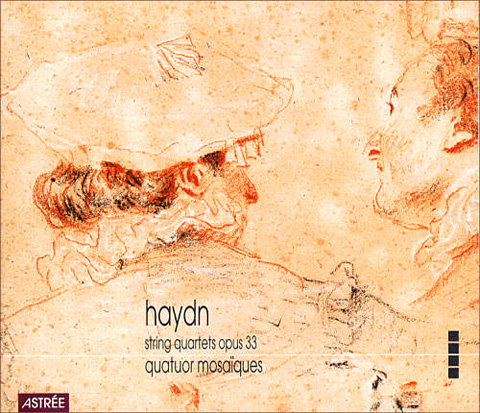
Andre Rieu’s latest extravaganza, Andre Rieu in Wonderland, is both predictable and astonishing. The live concert, containing popular classical items served up along with horses, a camel and an elephant, plus Some Day My Prince Will Come and Somewhere Over the Rainbow, is a happy-happy carnival of enormous color and brio. Rieu’s events are basically parties and, though purists are sure to disapprove, they really can’t harm anyone. They give great pleasure, as well as helping banish the popular conception of the classics as being drab (Rieu’s underlying purpose). This one took place in Holland’s Efteling amusement park and centers on enchanted castles and delicious princesses. Clearly an almost-fantastic time was had by almost everyone.
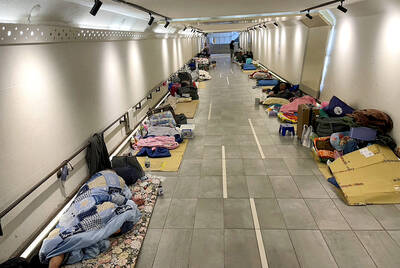
From the last quarter of 2001, research shows that real housing prices nearly tripled (before a 2012 law to enforce housing price registration, researchers tracked a few large real estate firms to estimate housing price behavior). Incomes have not kept pace, though this has not yet led to defaults. Instead, an increasing chunk of household income goes to mortgage payments. This suggests that even if incomes grow, the mortgage squeeze will still make voters feel like their paychecks won’t stretch to cover expenses. The housing price rises in the last two decades are now driving higher rents. The rental market
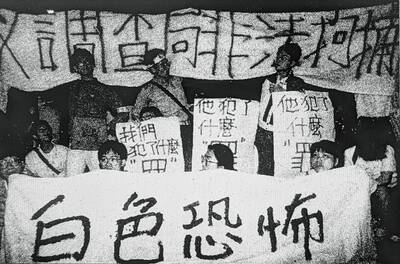
July 21 to July 27 If the “Taiwan Independence Association” (TIA) incident had happened four years earlier, it probably wouldn’t have caused much of an uproar. But the arrest of four young suspected independence activists in the early hours of May 9, 1991, sparked outrage, with many denouncing it as a return to the White Terror — a time when anyone could be detained for suspected seditious activity. Not only had martial law been lifted in 1987, just days earlier on May 1, the government had abolished the Temporary Provisions Effective During the Period of National Mobilization for Suppression of the Communist

When life gives you trees, make paper. That was one of the first thoughts to cross my mind as I explored what’s now called Chung Hsing Cultural and Creative Park (中興文化創意園區, CHCCP) in Yilan County’s Wujie Township (五結). Northeast Taiwan boasts an abundance of forest resources. Yilan County is home to both Taipingshan National Forest Recreation Area (太平山國家森林遊樂區) — by far the largest reserve of its kind in the country — and Makauy Ecological Park (馬告生態園區, see “Towering trees and a tranquil lake” in the May 13, 2022 edition of this newspaper). So it was inevitable that industrial-scale paper making would

Hualien lawmaker Fu Kun-chi (傅?萁) is the prime target of the recall campaigns. They want to bring him and everything he represents crashing down. This is an existential test for Fu and a critical symbolic test for the campaigners. It is also a crucial test for both the Chinese Nationalist Party (KMT) and a personal one for party Chairman Eric Chu (朱立倫). Why is Fu such a lightning rod? LOCAL LORD At the dawn of the 2020s, Fu, running as an independent candidate, beat incumbent Democratic Progressive Party (DPP) lawmaker Hsiao Bi-khim (蕭美琴) and a KMT candidate to return to the legislature representing